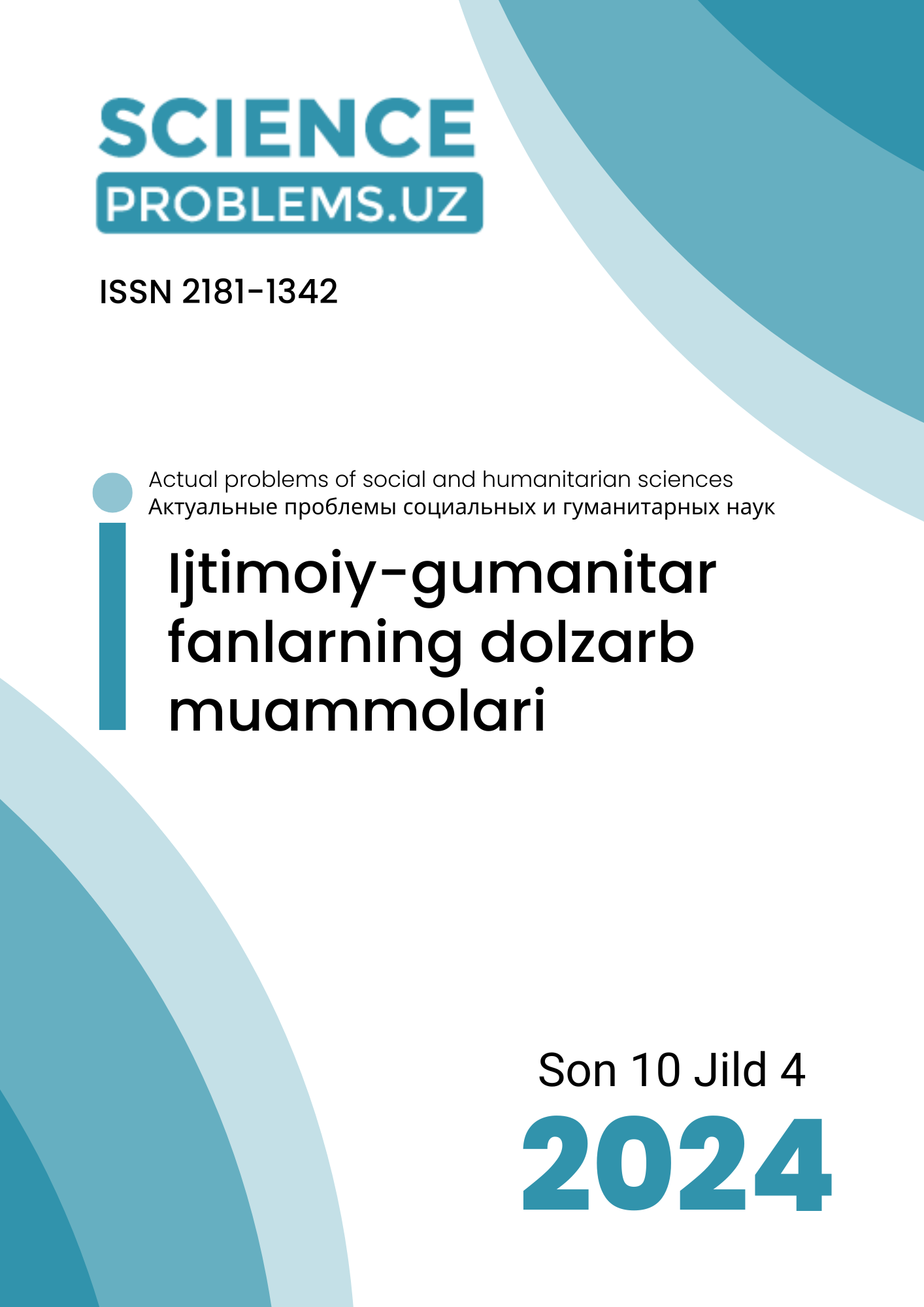КОМПАРАТИВНЫЙ АНАЛИЗ РОЛИ ШКОЛЫ И УНИВЕРСИТЕТА В ВОСПИТАНИИ ЗАПАДНОЙ МОЛОДЕЖИ
Kalit so'zlar
https://doi.org/10.47390/SPR1342V4I10Y2024N31Kalit so'zlar
воспитание, обучение, компаративный подход, педагогика, школа, университет, образование, культура, цивилизация, Восток и Запад.Annotasiya
В данной статье представлен сравнительный анализ роли школы и университета в воспитании молодежи в странах Запада. Исследуются ключевые функции каждой из этих образовательных институций и их влияние на формирование личностных качеств, ценностей и социальных навыков у молодых людей. Рассматриваются различные аспекты, включая образовательные подходы, культурные и социальные контексты, а также экономические факторы, влияющие на процесс воспитания.
Manbalar
1. Karimov R., Naumenko O., Saidova K., Elmuratov R., Bekbaev R. The Phenomenon of Education in the Context of an Intercultural Philosophical Approach // Wisdom. – 2022. – №4(24). – P.84-90.
2. Бекбаев Р.Р. Теории познания. – Ташкент, 2023.
3. Аникеев Д.М. Формирование современных концепций физического воспитания в странах Западной Европы во II половине XX - начале XXI века // Физическое воспитание студентов. – 2012. – №. 4. – С. 9-12.
4. Balsamo M. The Influence of the Renaissance on Current Teaching Methods. In BSU Honors Program Theses and Projects. Item 208. 2017. Available at: http://vc.bridgew.edu/honors_proj/208.
5. Джуринский А.Н. История педагогики и образования: учебник для бакалавров / 2-е изд., перераб. и доп. — Москва: Издательство Юрайт, 2012. — 675 с.
6. Давыдова Р. Фасилитация обучения в контексте трансформации традиционной системы образования // Acta Education. – 2024 – №1(1). – С.29-33.








